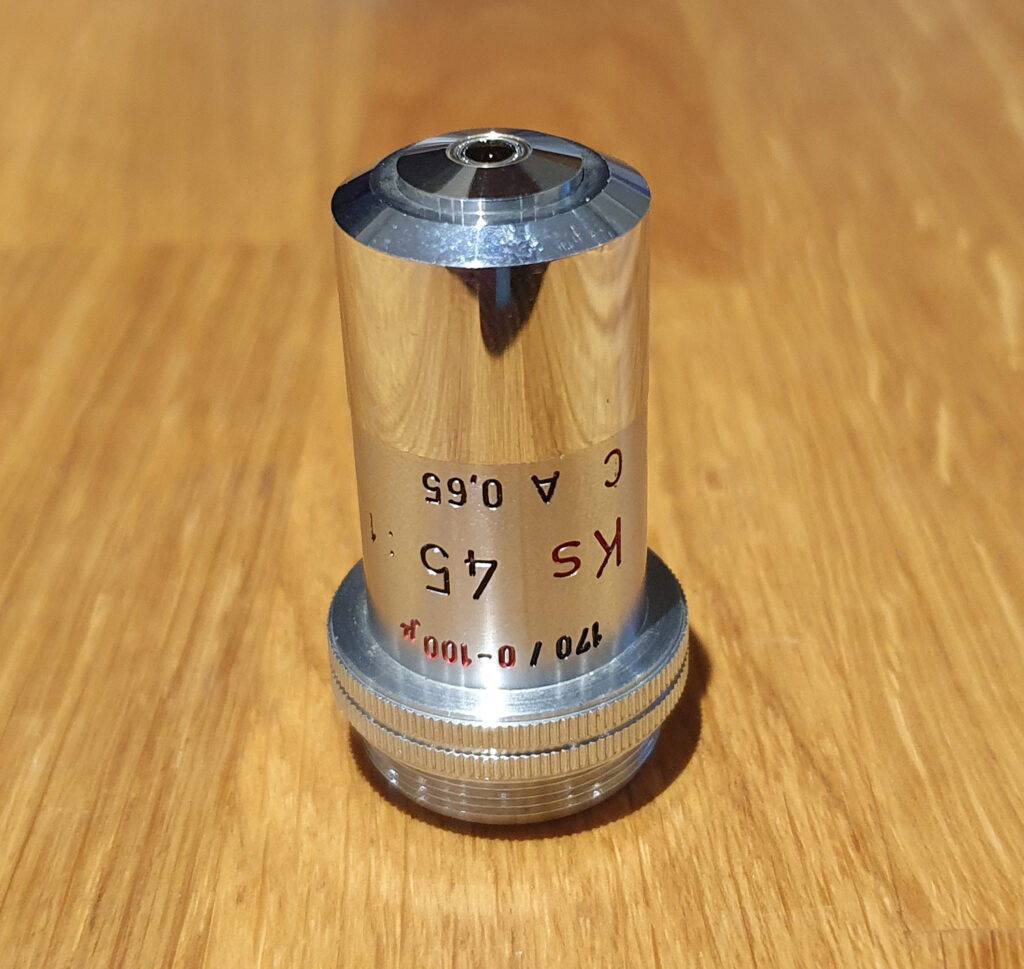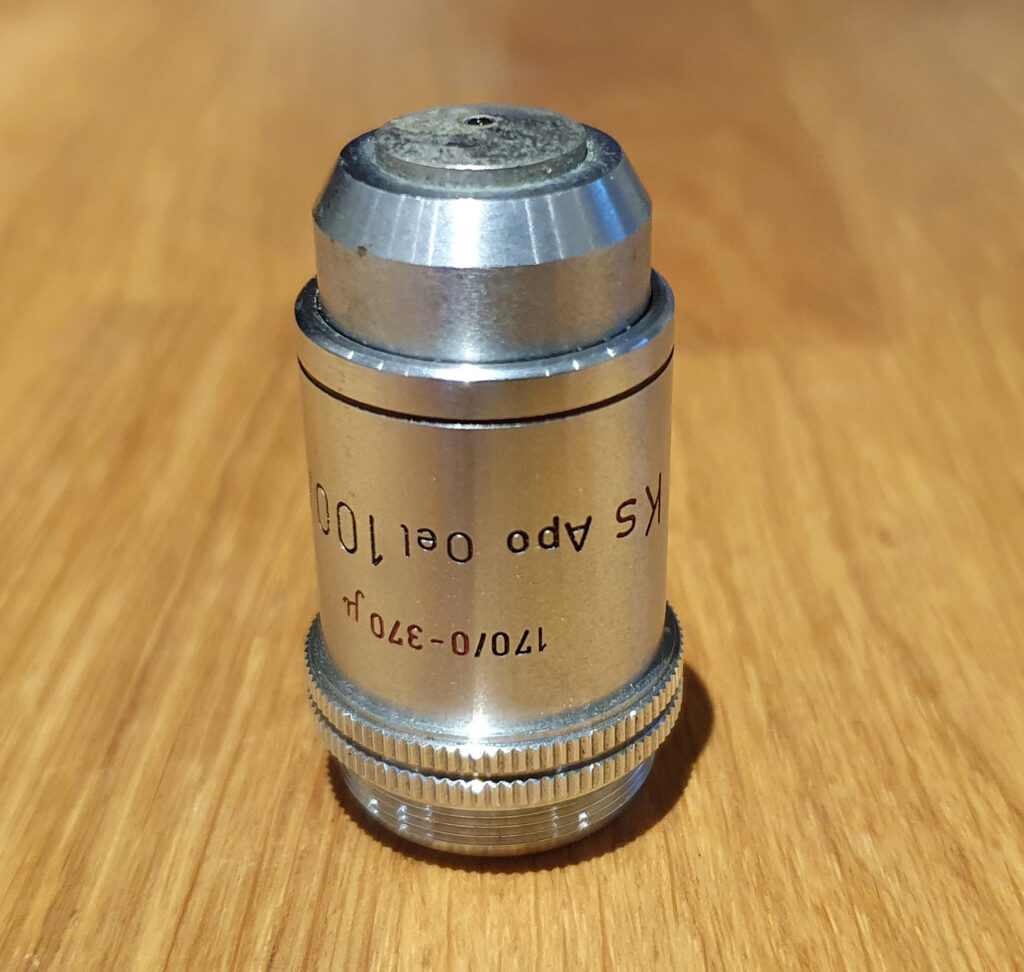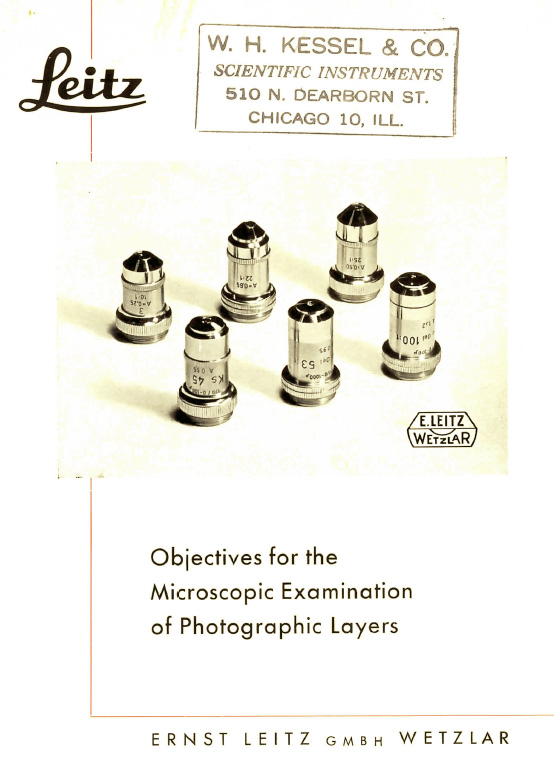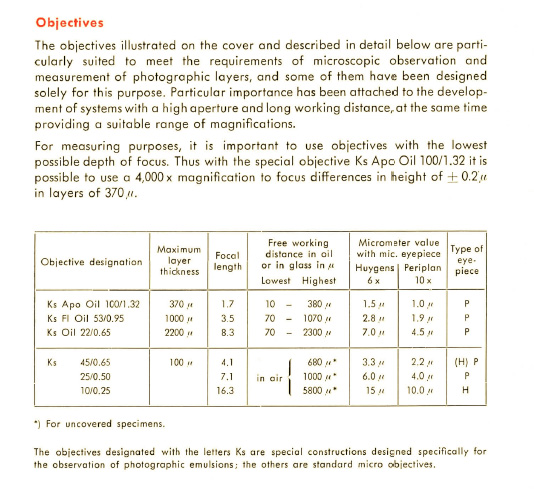When looking out for interesting imaging equipment, I normally have a bit of an idea what I’m after – usually my focus is on UV imaging, and that then has a bearing on the types of things that I am looking for. Since getting into microscopy though my horizons have been broadened as there is some really quirky and interesting stuff out there. This leads me to today post – the Leitz Ks series microscope objectives. These were part of a set of lenses that Leitz produced for a very specific job – looking at the grain in photographic emulsions. Having spent a fair bit of time inhaling fumes in a dark room when I was younger, I thought this was a cool idea and set about trying to find some of these objectives….
Finding these was not too hard, but finding them for a reasonable price was a bit more difficult. In the end, one came from Germany, one from a dealer in Sweden, and two from a lab equipment reclamation company here in the UK. Here they are.

In the range there were 4 objectives. From smallest magnification to largest, there was the 22x Oel (oil immersion) A 0.65.

Then we have the Ks 45x A 0.65 dry objective.

Next is the Ks 53x A 0.95 fluorite oil immersion objective.

And finally the Ks 100x A 1.32 apochromatic oil immersion objective.

All of these objectives were designed for Leitz 170mm finite tube length microscopes. Normally, on an objective after the tube length is the thickness of the coverslip that they are designed for, however these are different. With these there are different numbers and then a ‘mu’ symbol.
So what’s going on with these objectives? At this point it is a good point to dig back through the archives for some information. There was a Leitz brochure produced for these objectives, and I downloaded a copy from online. Here’s the front page.

The first page of the brochure give a bit more of a background to the objectives in the range.

As can be seen, the full range had 4 different Ks objectives, and two others. The numbers after the tube length, refer to the maximum layer thickness of the photographic film that they were designed for. Oddly on the 22x objective it says 0-2300, instead of the 2200 it has in the table above, while on the other objectives, the numbers correspond to the ‘max layer thickness’ in the table.
The next page in the brochure gives more details on the objectives.

After getting these I thought I’d see what type of images I could get from them, so dug out an old slide and the immersion oil (for the 3 objectives that needed it). My Olympus microscope has a 160mm tube length (as opposed to the 170mm tube length that these were designed for), but I have used other 170mm tube length objectives with success so thought it was still worth a try. At this point I should be sharing some lovely images showing the grain structure in the slide, however I have nothing for you, sorry. The images were actually not that good, from any of them, and I got sharper ones with my normal objectives. Not sure why this is the case to be honest. I struggle to believe that they are all damaged. Online, I was only able to find one thread talking about using them, and they were struggling too, so perhaps there is something odd about their design which makes setting them up and using them difficult. So for now they remain an interesting piece of history.
Thanks for reading, and if you’d like to know anything about this or other aspects of my work, you can reach me here.
